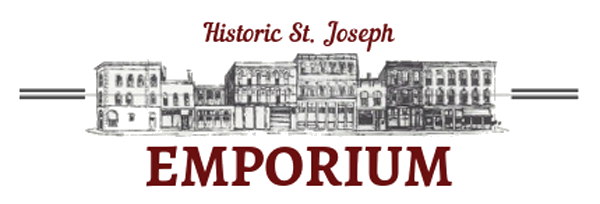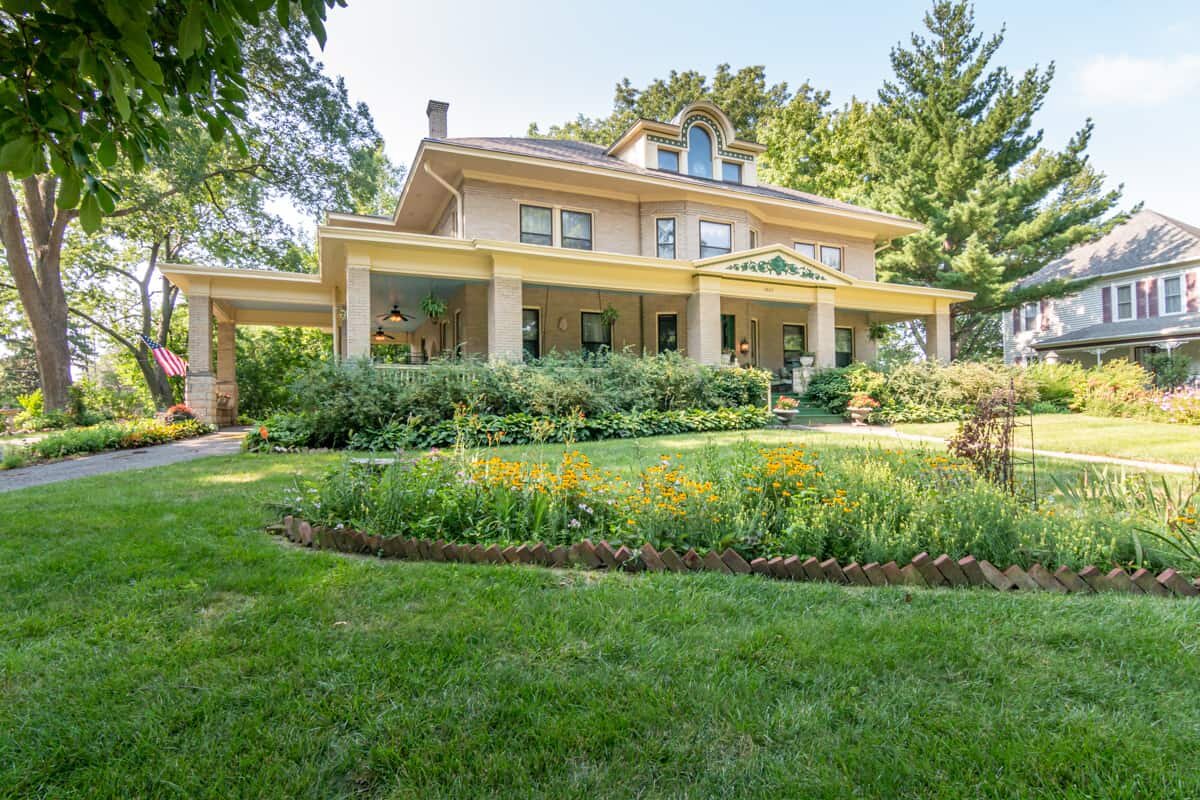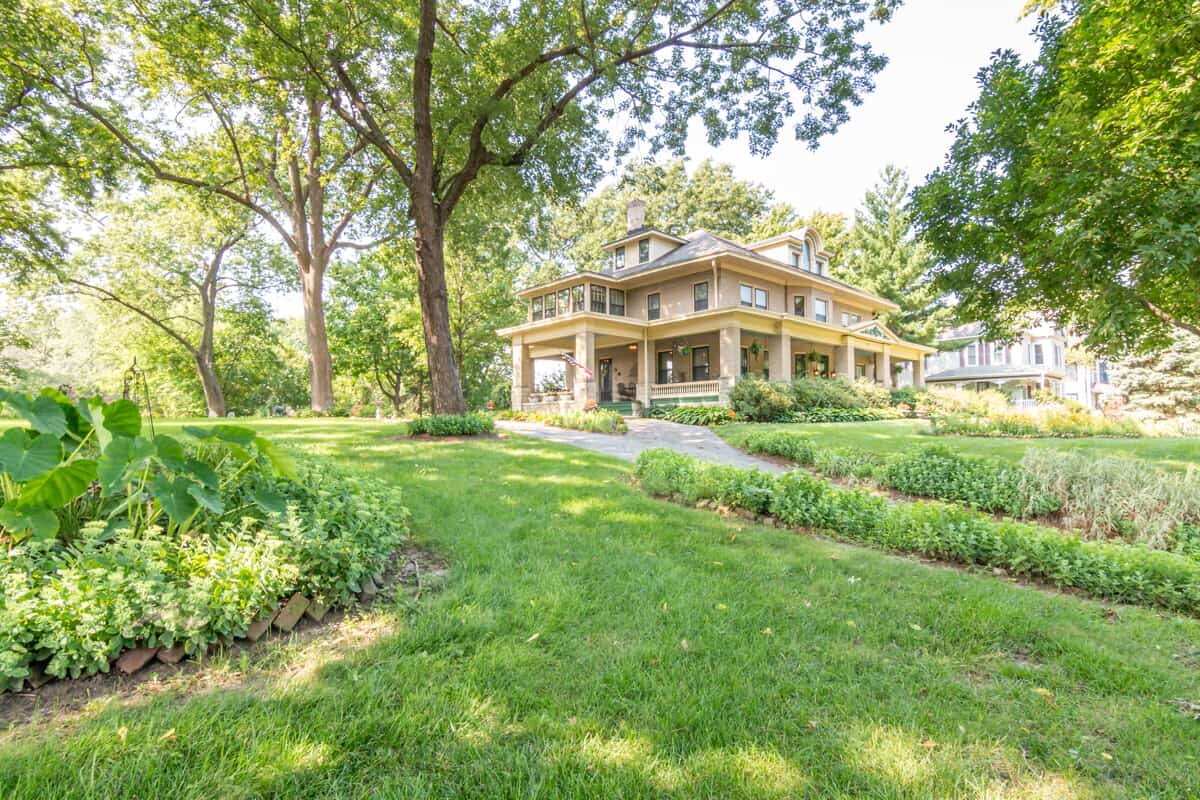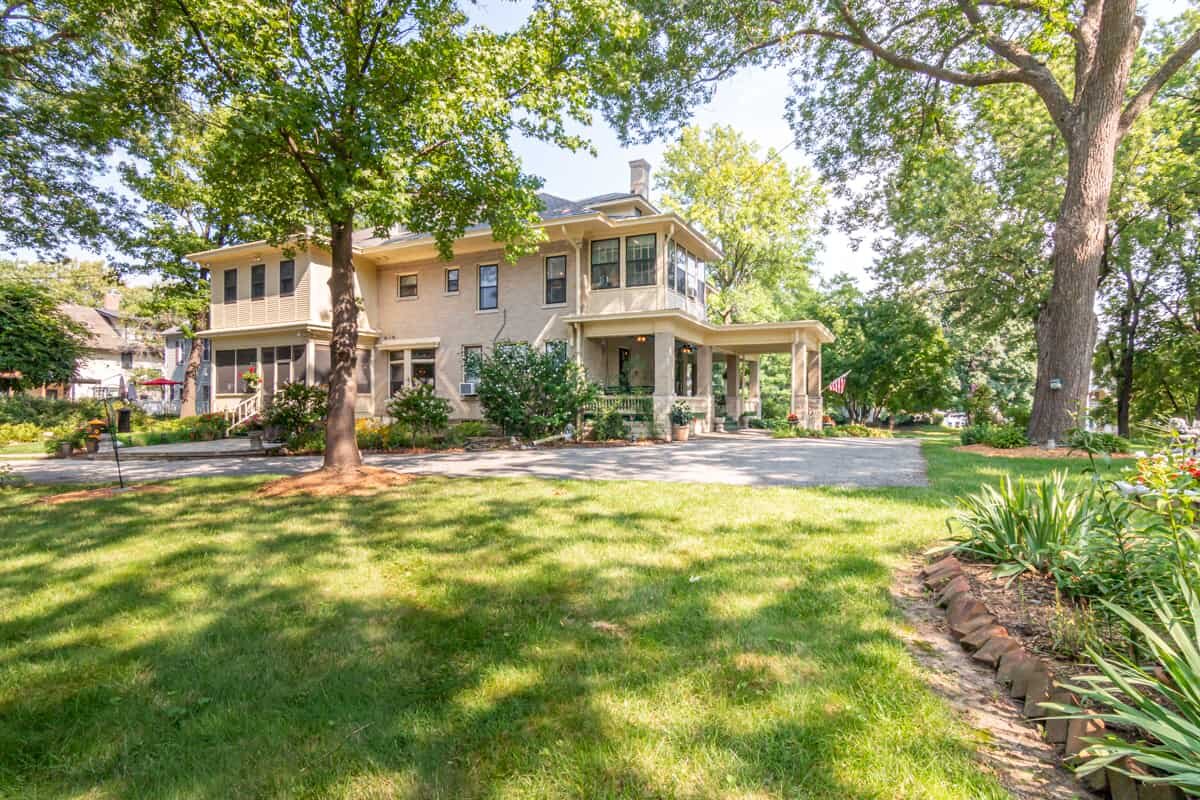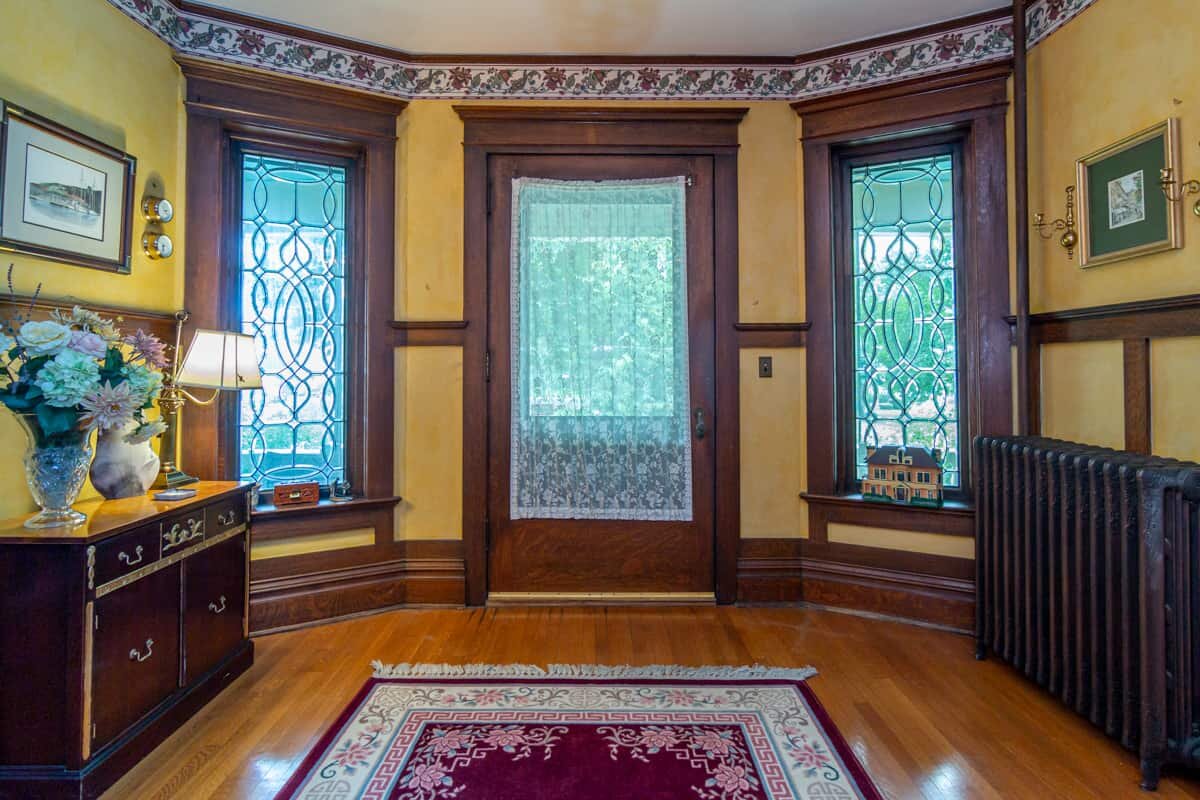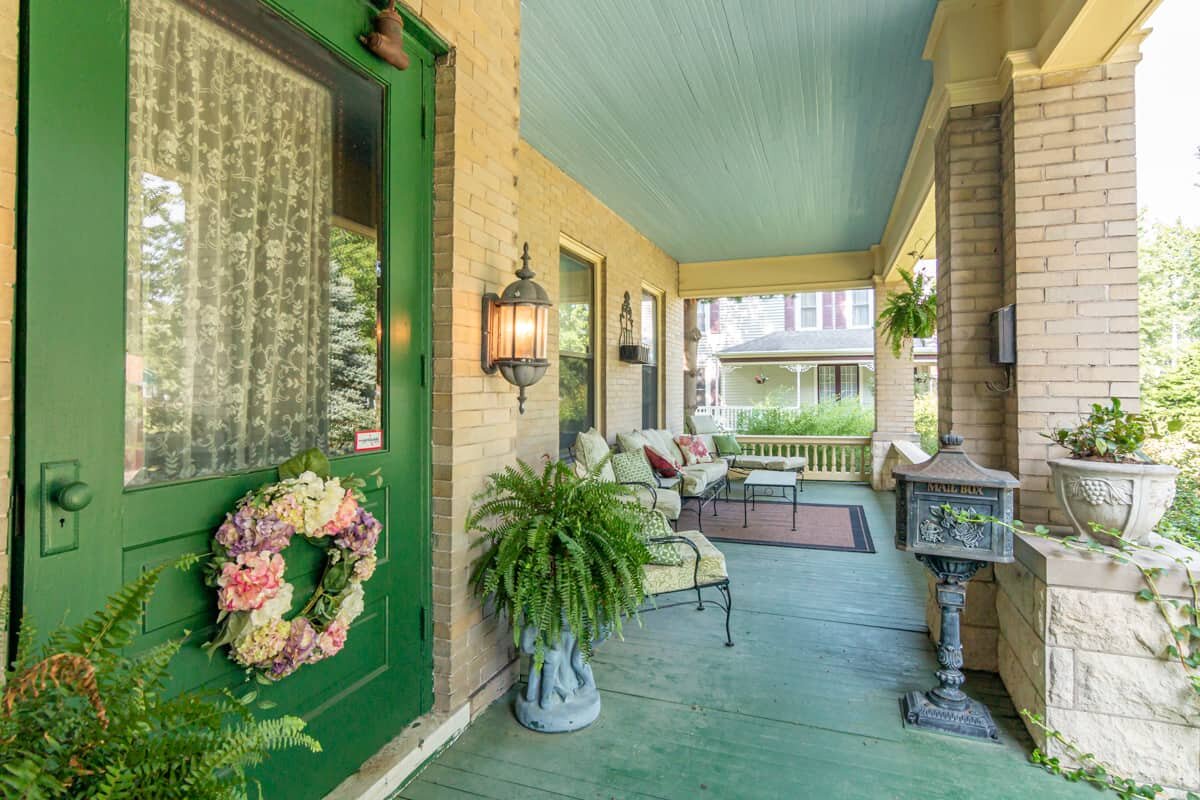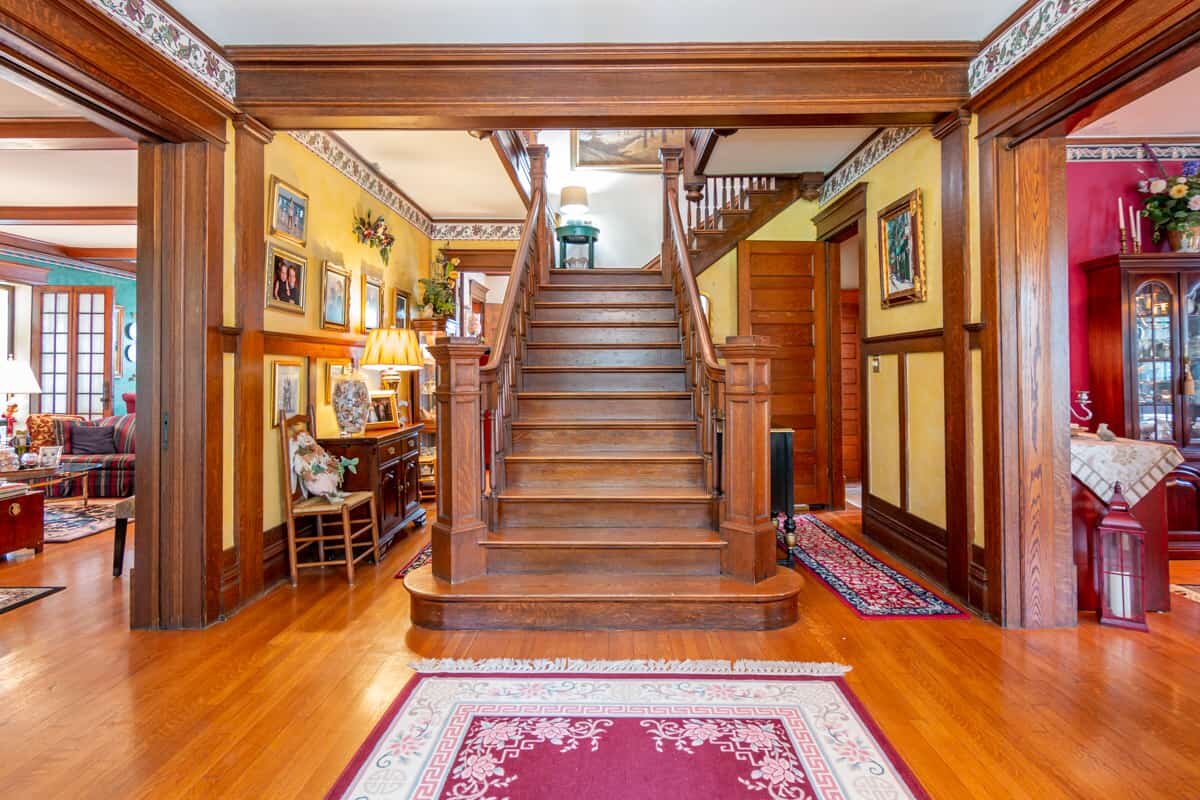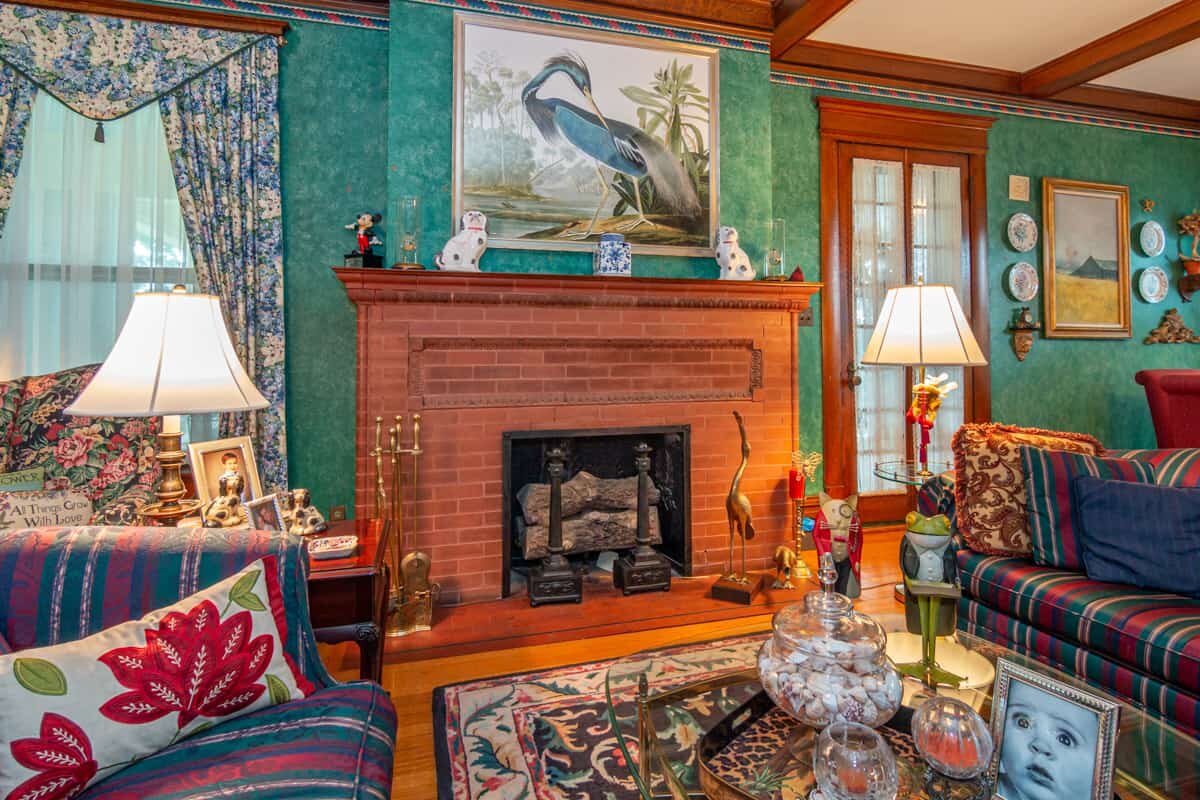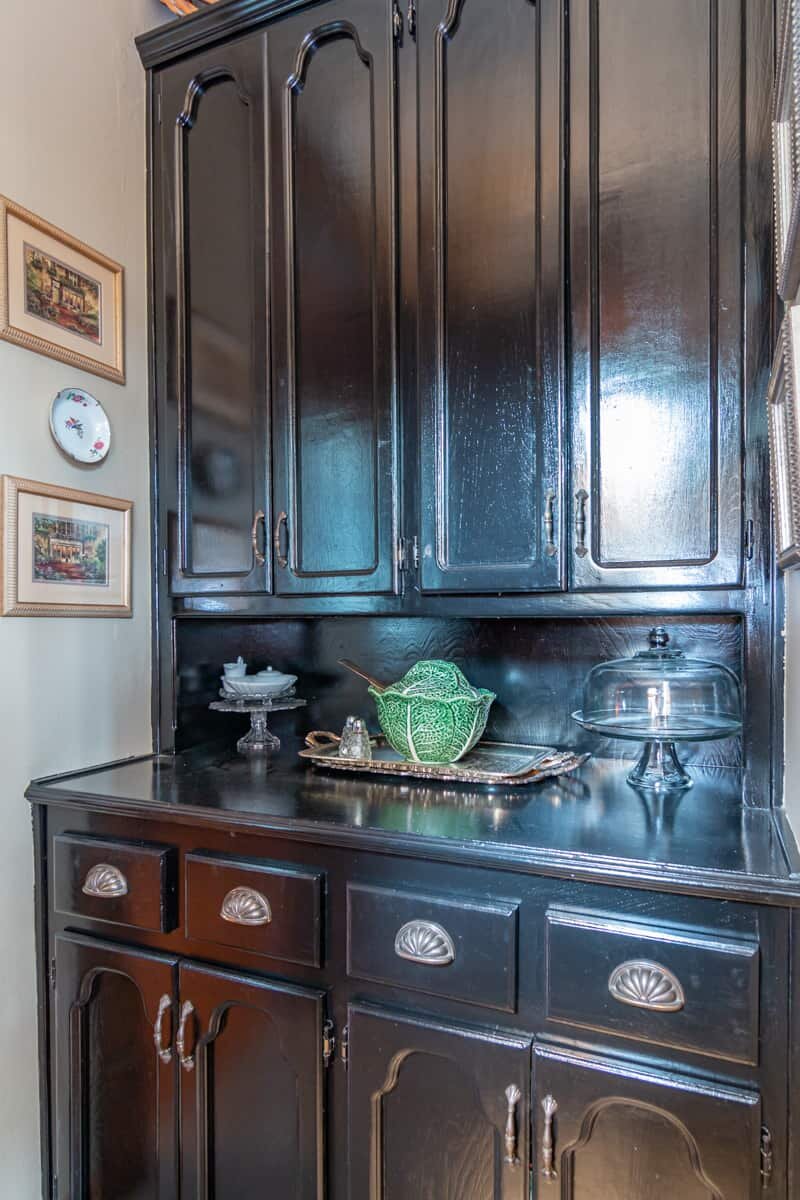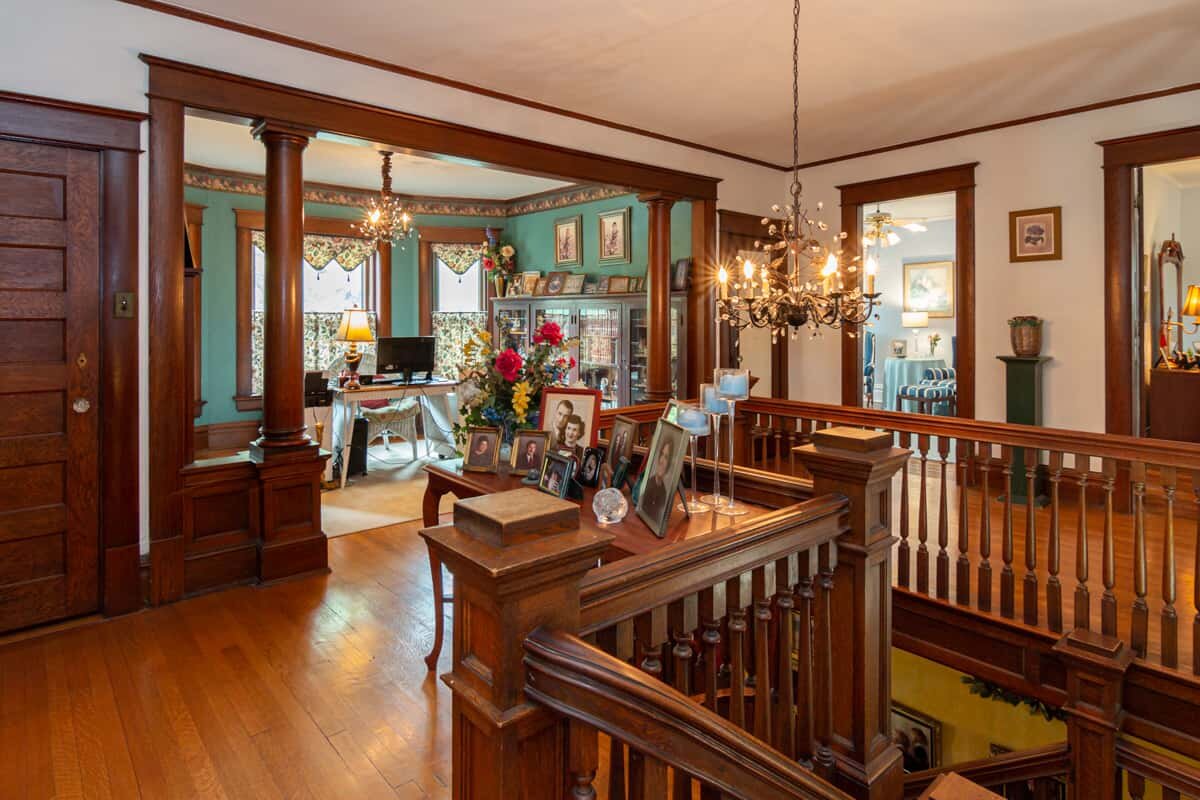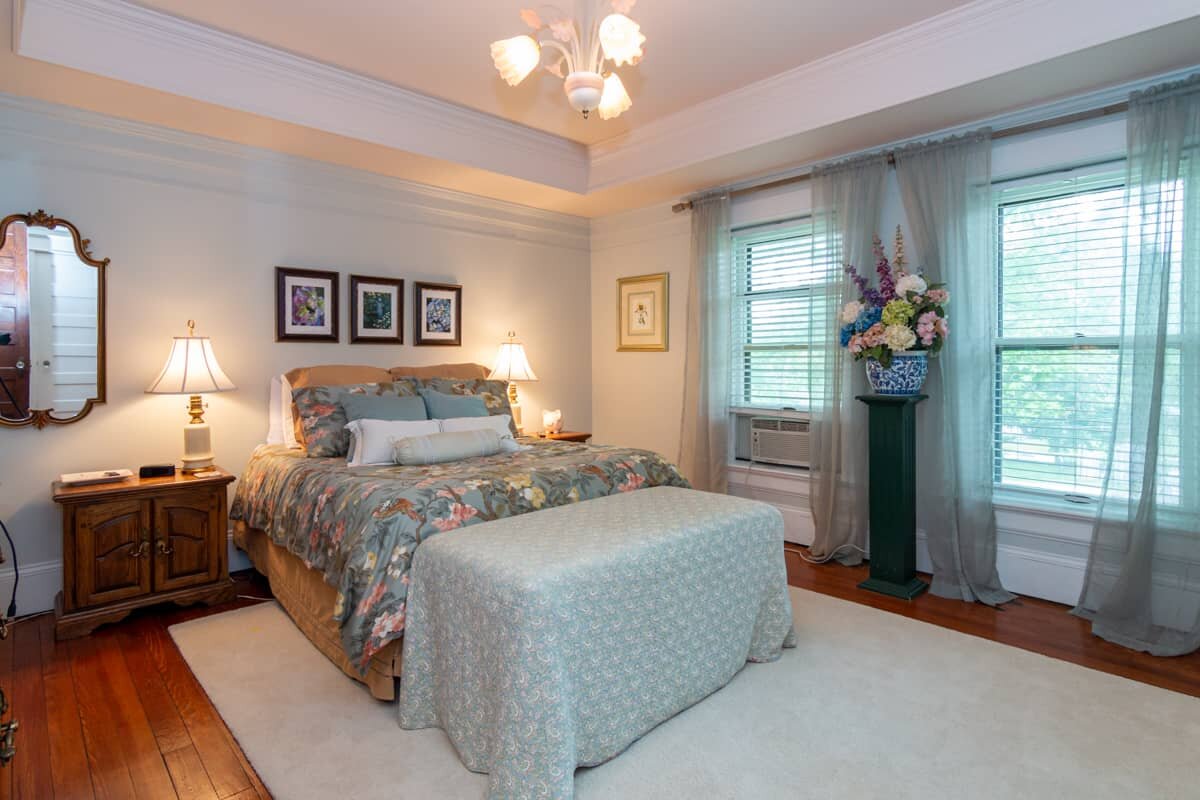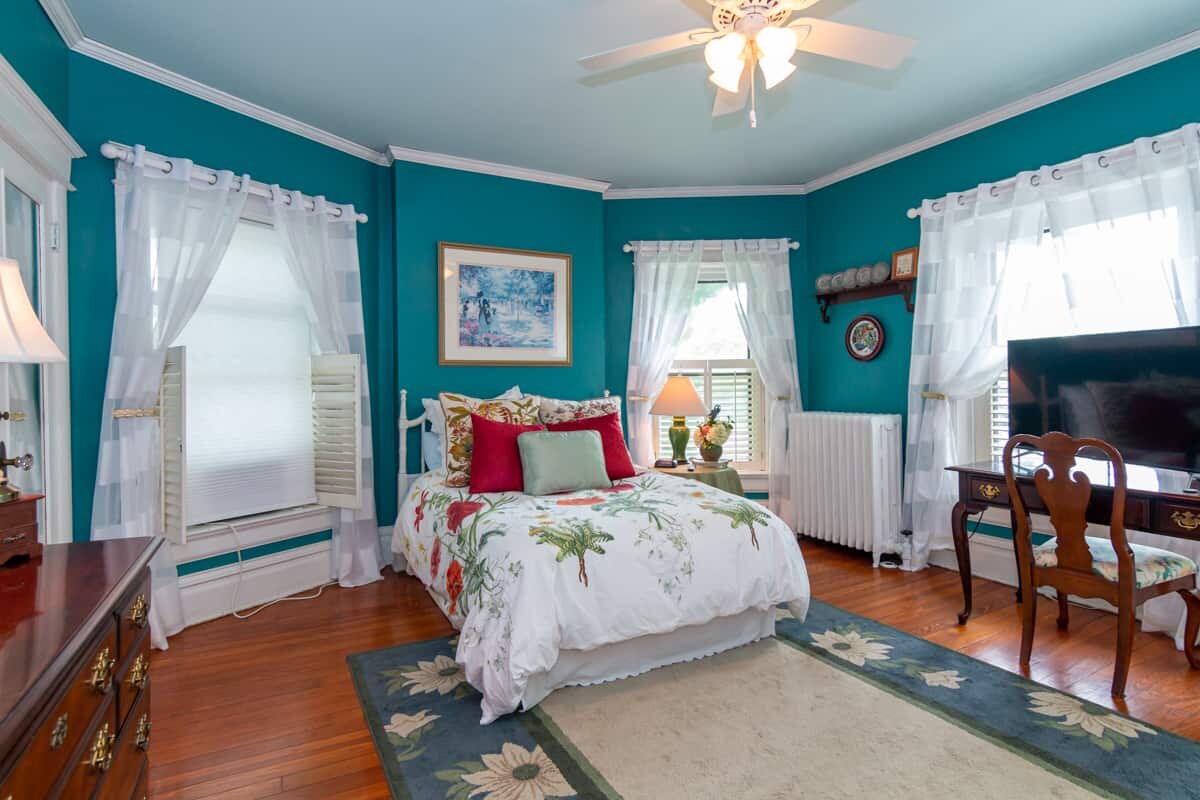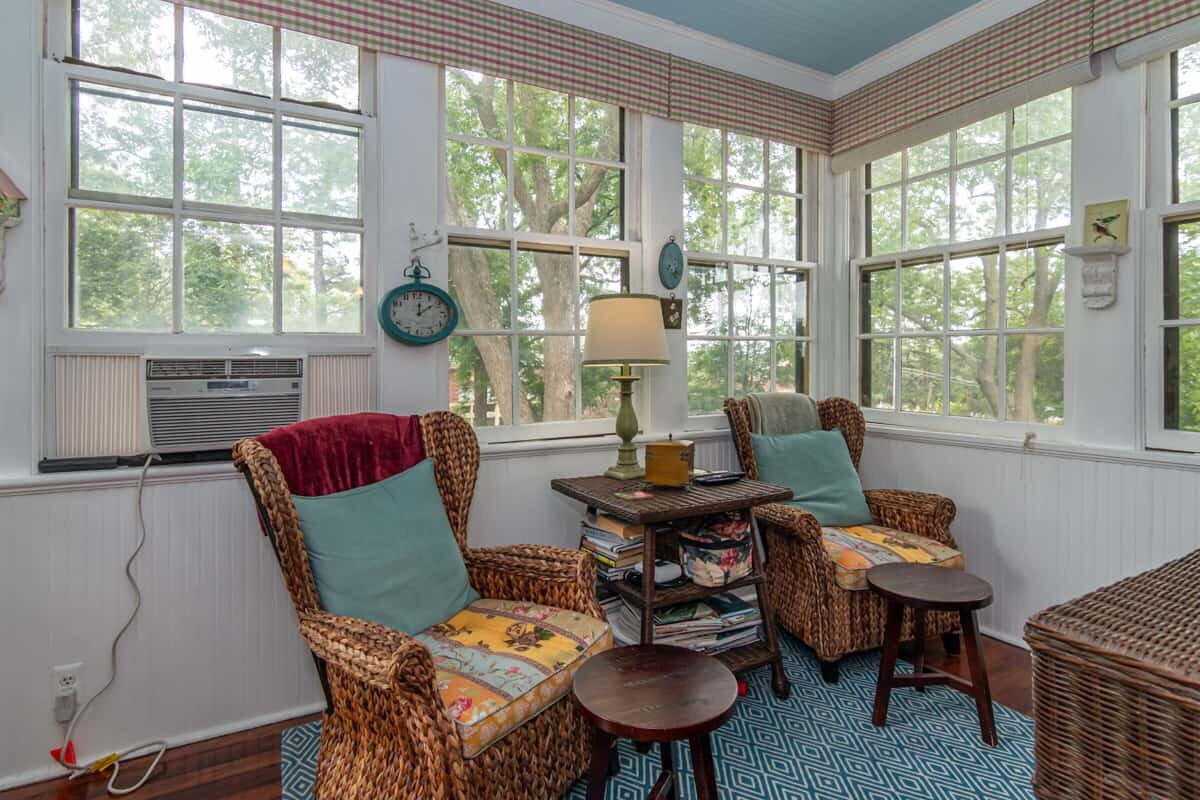Purchase Price $409,900
5 bed · 4.5 bath · 6,000 sqft
Character and elegance abound in this gorgeous three-story home next to the Albrecht-Kemper Museum. Fabulous landscaping provides abundant beauty as you relax on the amazing wrap-around porch. The bedrooms are large and airy, with plenty of closet space. A large laundry room is located on the bedroom level and the 3rd floor is completely finished, including an updated full bath. Beautiful woodwork, pocket doors, butler’s pantry, and a screened in porch top it all off.
Contact: Laura Wyeth at Berkshire Hathaway, Stein & Summers
Call: (816) 387-6899
House History & Gallery
On October 14, 1906 the St. Joseph Gazette published an announcement of the completion of a stunning new home on Frederick Avenue: “A living room 17 by 15 feet, occupying nearly the entire eastern part of the first floor, is one of the pleasant features of the home recently erected on the Asylum boulevard by August Quentin. The house is built of fine pressed brick from Brazil, In., and is one of the handsomest on the boulevard. The large porch, extending entirely across the front of the building, is another attractive detail of the general plans, which were drawn by Trunk & Helm. On the first floor aside from the living room are a large reception hall, kitchen, dining room and library. On the second floor are four chambers and a large sewing room and in the basement are laundry and heating plant.”
August K. Quentin, the man who built this lovely house on one of the most desirable streets in the city was the Vice President of Englehart-Davison Mercantile. The millenary business was lucrative at the turn of the century.
The 1910 census tells us that August was sharing the house with his first wife Minnie, their son Frank and two servants: the German-born housekeeper, Anna Wank, and the chauffeur, Homer Dale. Unfortunately for the family, Minnie – a St. Joseph native – developed uterine cancer and died at the home on April 14, 1913.
By the time of the 1920 census, August had remarried. His second wife Blanche was quite a lot younger than him (she lived until 1962), but she took an active role in the city’s social scene as the wife of one of its most successful businessmen. Frank still lived at the house and was working for his father’s company and the family’s needs were met by the housekeeper Effie L. Baker.
In the early 1920s, August and Blanche did what so many wealthy folks in St. Joseph did when they decided to downsize; they moved to the Victorian Court apartments. August continued to work, and it was on a business trip to New York City in January 1928 that he took ill. He recovered sufficiently to return home, but he died on February 21.
The Quentins sold their house to the president of Douglas Candy Company, Ralph W. Douglas and his family. Ralph had been born in Andrew County in 1871 and went to work for the confectionary company founded by his father. Under Ralph’s leadership Douglas Candy Company, located at 209-10 S. 2nd St., became a thriving enterprise.
So thriving that Ralph was able to afford one of the loveliest houses in the city. The Douglas family remained in their wonderful home until the end of the 1950s.
One of the attractions of the house for the Douglases was its size, they had a larger family than had the Quentins. In 1930, Ralph and his wife Jane lived in the home with their three adult children: Charles (age 26), Ralph (24), and Elizabeth (20). Like the Quentins, they had a live-in housekeeper, Bertha Ingram.
The Douglas Candy factory was located a fair distance from the secluded, tree-shaded mansions on Frederick Avenue, but sometimes the two collided. In 1941, the workers at the factory went out on strike forcing the closure of the plant. In September the female workers decided to take the fight to the Douglas home and they began picketing at the house. As the newspaper stated with remarkable understatement, “they aroused considerable attention.” Despite threats by the management that they would permanently close the company rather than make concessions to the worker, the strike was resolved and the company reopened and continued to make their famous Cherry Rounders for several more decades.
One can’t help but suspect that Ralph’s wife, Jane Cobb Douglas, was somewhat sympathetic to the plight of the women workers who picketed her house. Jane was a highly educated woman who was very active in politics and civic life of the city. In 1933 she served on the Board of Education and she was a leader in the League of Women Voters, often hosting their meetings at the house.
Following Ralph’s death in 1948, Jane and their son Charles who took over leadership of the candy company, continued to live at the house. Charles had served in the Navy for 31 months beginning in December 1942 and was stationed in Panama and Jamaica. He returned home in 1945 and began working for the family business.
Some houses are simply lovely and have a lovely aura, certainly the Quentin-Douglas House at 2808 Frederick Avenue is one of those. Built with money made in the millinery business and sustained from the profits of candy, what could be sweeter? The house has been wonderfully maintained and is ready for its next lovely chapter.
